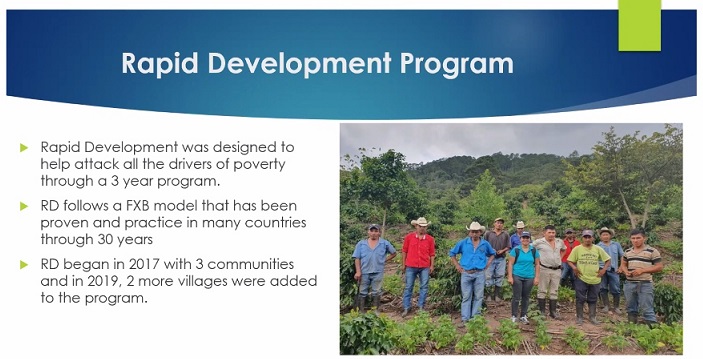Here has what I've been reading this Labor Day 2017 weekend: 1) Private Yankee Doodle by J.P. See previous blog review. 2) The Legend of Drizzt: Volume 1 by R.A. Started reading about a D&D hero who's a Drow elf. I have about 4,000 pages to read in four different novels. I'm only on page 77. Nintendo recently announced that they will be releasing the mini Super Nintendo Entertainment System Classic Edition in late September. On its website, Nintendo promised to bring back 'the golden age of 16-bit gaming' with the release of the mini SNES Classic Edition console on Friday, Sept. 10:30am to - 6:30pm. Location: West Newton. Take a magical tour through time and legend. As you wander down the village streets and pathways. Bales was invited to visit Taiwan (then Formosa) in 1958 by the Ambassador to the United States, Hollington K. Not one to waste an opportunity, Bales agreed to tour the country and decided to go on a “world tour” with stops in several Asian and European nations.
This post was written by Heath Robinson, the Project Archivist for the James D. Bales Papers project at the University of Arkansas Libraries Special Collections.

James D. Bales (1915-1995), was an author and professor of Bible and theology at Harding University for about forty years. Bales was also part of the National Education Program, an anti-communist group based in Searcy, Arkansas, and he produced much of the organizations written materials. The James D. Bales Papers will be open in late September 2017. Processed with the aid of a grant by the National Historic Publications & Records Commission (NHPRC), the collection will be of particular use to historians, political scientists, and religious scholars.
Dr. Bales astride a camel at the Pyramids of Giza. While in Cairo he contacted a curator of the Cairo museum to perform research which he included in his books regarding Mormonism. From the James D. Bales Papers (MC 1256), series I, box 4, file 15, image 139.
James D. Bales was invited to visit Taiwan (then Formosa) in 1958 by the Ambassador to the United States, Hollington K. Tong. Not one to waste an opportunity, Bales agreed to tour the country and decided to go on a “world tour” with stops in several Asian and European nations.
Dr. Bales met personally with Chiang Kai-Shek during his time in Taiwan. From the James D. Bales Papers, Series I, box 3, file 9, image 8.
Dr. Bales appears to have had several meetings with Ambassador Hollington K. Tong. Tong was a Chinese Christian who invited several missionaries to visit Taiwan. From the James D. Bales Papers, Series I, box 3, file 9, image 13.
Bales unofficially began in January with stops in territorial Hawaii and San Francisco. From there, he traveled to the following countries, in order, over the next six months: Japan, S. Korea, Taiwan, Hong Kong, Philippines, Vietnam, Singapore, Thailand, India, Pakistan, Iraq, Lebanon, Israel, Egypt, Greece, Italy, Germany, France, Turkey, England, and Belgium.
During his time in South Korea, Bales visited with military leaders and observed military exercises. From the James D. Bales Papers, Series I, box 3, file 9, image 27.
Bales gave speeches and sermons throughout the trip. He spoke about Christianity and the efforts of Christianity against atheism and communism. He also took the opportunity to meet with locals to discuss their cultures and current events, gauging the status of Christianity and communism in each nation. Bales skipped trips to the Taj Mahal and Angkor Wat stating, “I am not very much of a sight seer. It is better to meet people and learn what one can.”
Legend Of Handcoming Late September 2017 Calendar
Bales visits the site of the Emerald Buddha while in Bangkok, Thailand. While in Asia, Bales attended several ceremonies celebrating the New Year. From the James D. Bales Papers, Series I, box 4, file 77.


Throughout his trip, Bales continued to write. He produced a column intended for the Gospel Advocate, “Flying West to the East,” and worked on his book Communism: Its Philosophy and Practice.
Bales visited the Colosseum and Vatican City in Rome. While in the city he also met with individuals seeking his assistance with founding a Biblical Studies school in Italy. From the James D. Bales Papers, Series I, Box 4, file 32, image 198.
Bales also acquired materials for research purposes and for use in his classes at Harding College. He sent these items back to Searcy to his wife, Mary Bales, with whom he was coordinating the sale of his books throughout his trip. Bales ended his trip early due to illness with a final stop at the World’s Fair in Brussels.
For more information on accessing the James D. Bales Papers or any of the other substantial archives, rare books, and Arkansas Collection materials available in Special Collections, contact the department at specoll@uark.edu.
If you’re visiting a Southeast Asian country around this time of year, then you’re in for a treat – late September to early October is when the Chinese Mid-Autumn Festival takes place, filled with fun activities and cultural performances.
Originating from China, the harvest festival is also known as the Mooncake Festival or the Lantern Festival, and was traditionally meant to offer thanks for a bounteous harvest and in celebration of the full moon.
Countries with a large Chinese population like Malaysia, Singapore, and Vietnam usually have lively celebrations.
Each country in the region has their own take on the celebrations, so here are some of the special activities you can only participate in during the Chinese Mid-Autumn Festival:
For many, mooncakes are undoubtedly one of their favorite parts of the Chinese Mid-Autumn Festival. You can easily find them at most major supermarkets and bakeries; they’re commonly given as a gift to family and friends.
The palm-sized delicacy has a crust that is either made of pastry or a mochi-like layer made of glutinous rice (known as “snow skin”). While the filling is often sweet, such as lotus seed paste or sweet bean paste, there are also savory varieties with meat, as well as a salted egg yolk center.

According to a Chinese legend, Han Chinese rebels used mooncakes to pass secret messages to one another in the final uprising against Mongol rulers, leading to the creation of the Ming Dynasty in 1368.
Lanterns are another significant part of the celebrations, coming in a variety of shapes and colors that draw inspiration from nature and local folklore.
In Vietnam, children will carry lanterns and wear masks as part of a night parade, with the lanterns signifying their hope for the sun’s light and warmth to return after winter.
Nowadays, many places organize workshops and booths open to the public, where you can learn how to decorate your own paper lantern, in addition to other handicrafts, such as painting Chinese umbrellas, learning how to make Chinese knots, or trying your hand at Chinese calligraphy.
Shopping malls, parks, and temples will often get into the spirit of the festival by being decked out in beautiful decorations and art installations that turn into dazzling light displays once the sun goes down.
Legend Of Handcoming Late September 2017 August
Our top picks for the best light displays include Sun Yat Sen Nanyang Memorial Hall and Gardens By The Bay in Singapore, as well as Thean Hou Temple in Kuala Lumpur.
Traditional Chinese performances are usually held during the festival, from classic Chinese operas to modern dance and music performances.

Some performances are even free of charge, like the nightly cultural performances at the Supertree Grove in Singapore’s Gardens By The Bay, so do keep an eye out!
Watch lion and dragon dance troupes strut their stuff to the beat of drums during a Mid-Autumn Festival parade.
You’ll also get to see parade participants wearing traditional costumes and carrying lanterns as they walk alongside brightly-decorated parade floats.
_____
Now’s the perfect time to experience the best of the Chinese Mid-Autumn Festival, so be sure to check out www.traveloka.com to book flights and hotels across Southeast Asia!
